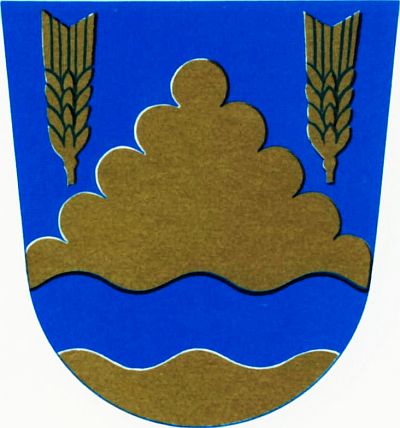Kiukainen: Difference between revisions
Knorrepoes (talk | contribs) No edit summary |
Knorrepoes (talk | contribs) m (Text replace - "[[Literature" to "{{media}} [[Literature") |
||
| Line 20: | Line 20: | ||
The main charge is a symbolised royal burial mound from the Bronze Age, which can be found in the municipality. The base refers to the many rivers, especially the Eurajoki river, that run through the municipality. The wheat ears are a symbol for the agricultural character of the area. | The main charge is a symbolised royal burial mound from the Bronze Age, which can be found in the municipality. The base refers to the many rivers, especially the Eurajoki river, that run through the municipality. The wheat ears are a symbol for the agricultural character of the area. | ||
{{media}} | |||
[[Literature]] : Pirinen, K. Local coats of arms in Finland (Suomen kunnallisvaakunat), Vantaa, 1982, 216 p. | [[Literature]] : Pirinen, K. Local coats of arms in Finland (Suomen kunnallisvaakunat), Vantaa, 1982, 216 p. | ||
Revision as of 23:53, 8 July 2014
| Heraldry of the World Civic heraldry of Finland |
KIUKAINEN
Region : Satakunta
Former province : Western Finland (until 1997 Turku and Pori)
Incorporated into : 2009 Eura
Official blazon
Alaisen, nyhäisen harjakoron jakaman kilven sinisessä yläkentässä kaksi paaluittaista kultatähkää, kultaisessa alakentässä sininen, aaltokoroinen hirsi
Origin/meaning
The arms were granted on September 26, 1950.
The main charge is a symbolised royal burial mound from the Bronze Age, which can be found in the municipality. The base refers to the many rivers, especially the Eurajoki river, that run through the municipality. The wheat ears are a symbol for the agricultural character of the area.
Contact and Support
Partners:
Your logo here ?
Contact us
© since 1995, Heraldry of the World, Ralf Hartemink 
Index of the site
Literature : Pirinen, K. Local coats of arms in Finland (Suomen kunnallisvaakunat), Vantaa, 1982, 216 p.











